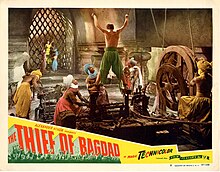
Citizen Kane is a 1941 American drama film directed by, produced by and starring Orson Welles and co-written by Welles and Herman J. Mankiewicz. It was Welles's first feature film.

Widescreen images are displayed within a set of aspect ratios used in film, television and computer screens. In film, a widescreen film is any film image with a width-to-height aspect ratio greater than 4:3 (1.33:1).

VistaVision is a higher resolution, widescreen variant of the 35 mm motion picture film format that was created by engineers at Paramount Pictures in 1954.
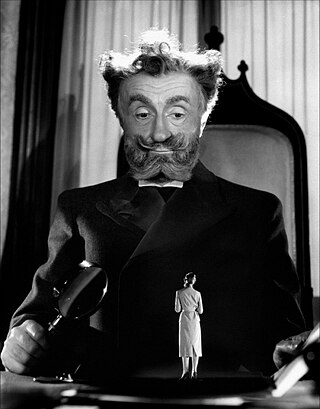
Special effects are illusions or visual tricks used in the theatre, film, television, video game, amusement park and simulator industries to simulate the fictional events in a story or virtual world. It is sometimes abbreviated as SFX, but this may also refer to sound effects.
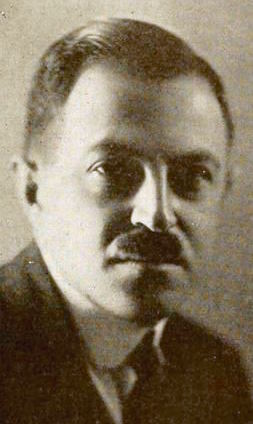
Max Fleischer was a Polish-American animator and studio owner. Born in Kraków, in Austrian Poland, Fleischer immigrated to the United States where he became a pioneer in the development of the animated cartoon and served as the head of Fleischer Studios, which he co-founded with his younger brother Dave. He brought such comic characters as Koko the Clown, Betty Boop, Popeye, and Superman to the movie screen, and was responsible for several technological innovations, including the rotoscope, the "follow the bouncing ball" technique pioneered in the Ko-Ko Song Car-Tunes films, and the "stereoptical process". Film director Richard Fleischer was his son.

CinemaScope is an anamorphic lens series used, from 1953 to 1967, and less often later, for shooting widescreen films that, crucially, could be screened in theatres using existing equipment, albeit with a lens adapter.

Gregg Wesley Toland was an American cinematographer known for his innovative use of techniques such as deep focus, examples of which can be found in his work on Orson Welles' Citizen Kane (1941), William Wyler's The Best Years of Our Lives (1946), and John Ford's The Grapes of Wrath, and The Long Voyage Home. He is also known for his work as a director of photography for Wuthering Heights (1939), The Westerner (1940), Ball of Fire (1941), The Outlaw (1943), Song of the South (1946) and The Bishop's Wife (1947).

A matte painting is a painted representation of a landscape, set, or distant location that allows filmmakers to create the illusion of an environment that is not present at the filming location. Historically, matte painters and film technicians have used various techniques to combine a matte-painted image with live-action footage (compositing). At its best, depending on the skill levels of the artists and technicians, the effect is seamless and creates environments that would otherwise be impossible or expensive to film. In the scenes, the painting part is static while movements are integrated on it.
Rear projection is one of many in-camera effects cinematic techniques in film production for combining foreground performances with pre-filmed backgrounds. It was widely used for many years in driving scenes, or to show other forms of "distant" background motion.

Mitchell Camera Corporation was an American motion picture camera manufacturing company established in Los Angeles in 1919. It was a primary supplier of newsreel and movie cameras for decades, until its closure in 1979.
Linwood G. Dunn, A.S.C. was an American pioneer of visual special effects in motion pictures and an inventor of related technology. Dunn worked on many films and television series, including the original 1933 King Kong (1933), Citizen Kane (1941), and Star Trek (1966–69).
Leslie Robert BurksA.S.C. was an American cinematographer known for his collaborations with Alfred Hitchcock.

The musical short can be traced back to the earliest days of sound films.

James Graham Stewart was an American pioneer in the field of sound recording and re-recording. His career spanned more than five decades (1928–1980), during which he made substantial contributions to the evolution of the art and science of film and television sound.

Craig Barron is an American visual effects artist and creative director at Magnopus, a media company that produces visual development and virtual production services for motion pictures, television, museums and multimedia platforms.
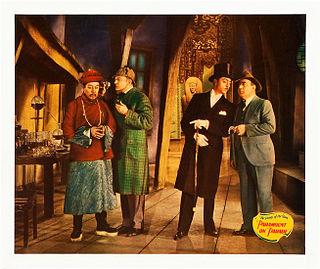
Paramount on Parade is a 1930 all-star American pre-Code revue released by Paramount Pictures, directed by several directors including Edmund Goulding, Dorothy Arzner, Ernst Lubitsch, Rowland V. Lee, A. Edward Sutherland, Lothar Mendes, Otto Brower, Edwin H. Knopf, Frank Tuttle, and Victor Schertzinger—all supervised by the production supervisor, singer, actress, and songwriter Elsie Janis.

A film, also known as a movie or motion picture, is a work of visual art that simulates experiences and otherwise communicates ideas, stories, perceptions, emotions, or atmosphere through the use of moving images that are generally, since the 1930s, synchronized with sound and other sensory stimulations. The word "cinema" is borrowed from the French cinéma, an abbreviation of cinématographe, from Ancient Greek meaning "recording movement". The word is today usually used to refer to either a purpose-built venue for screening films, known as a movie theater in the US; the film industry; the overall art form of specifically just filmmaking.
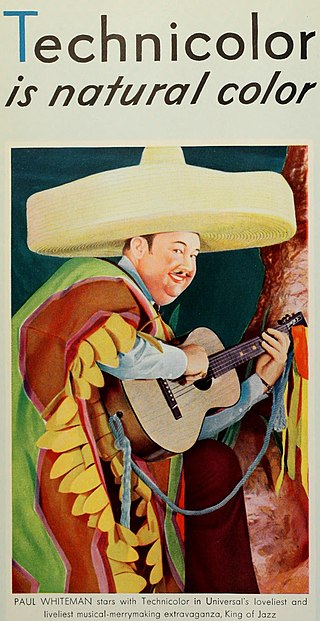
Technicolor is a family of color motion picture processes. The first version, Process 1, was introduced in 1916, and improved versions followed over several decades.
Technicolor Special was a common term used for Hollywood studio produced color short films of the 1930s and 1940s that did not belong to a specified series.

Robert Kane was an American film producer. He is sometimes credited as Robert T. Kane.

